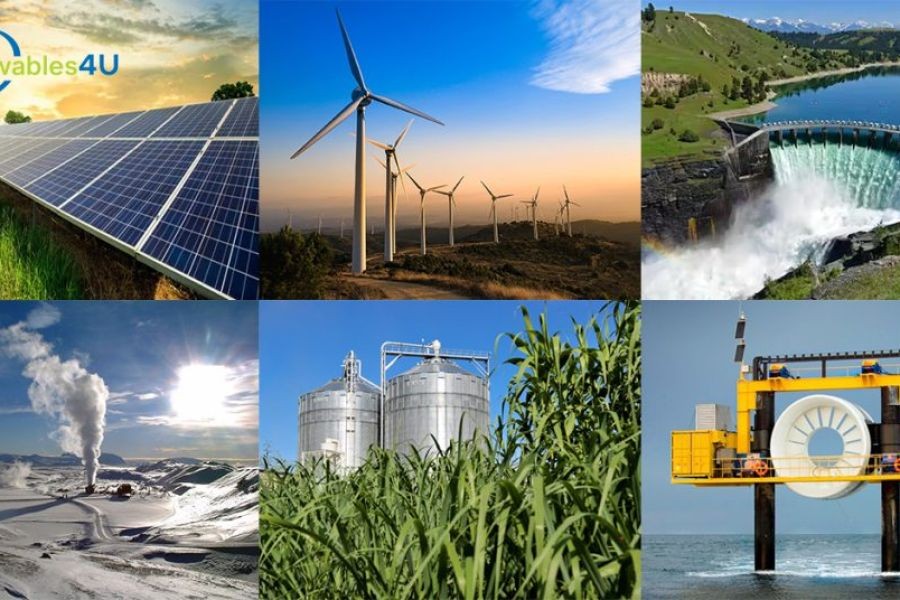Australia has long been touted as a global leader in renewable energy with its abundant natural resources and political will to transition to a sustainable future. However, not all renewable energy projects in the country are meeting their objectives. Despite government support and significant investments, some efforts are falling short. This article will delve into the underlying reasons for these failures, backed by data and expert insights, and explore how lessons learned can shape future initiatives.
Government Policy Analysis: Navigating the Renewable Energy Landscape
Australia's commitment to renewable energy is evident in its ambitious targets. The government aims to have 50% of the country's energy needs met by renewable sources by 2030. However, transitioning from policy to practice is fraught with challenges. A report from the Australian Energy Market Operator (AEMO) highlights that while the intent is clear, the execution is hampered by regulatory bottlenecks and infrastructure constraints. Additionally, the Australian Competition & Consumer Commission (ACCC) has raised concerns about the lack of transparency and competition in the energy market, which can stifle innovation and reduce the efficacy of renewable projects.
Case Study: The Challenges of the Solar Farm Initiative
The federal government's Solar Farm Initiative was launched with much fanfare, aiming to harness Australia's ample sunlight. However, several projects under this initiative have faced delays and budget overruns. For instance, a solar farm in New South Wales was projected to generate 200 MW of power but has only managed to reach 150 MW due to project mismanagement and unforeseen technical challenges.
According to the Australian Bureau of Statistics, such setbacks are not isolated incidents. In 2022, the renewable energy sector saw a 15% increase in project delays compared to the previous year. Industry experts argue that these issues stem from a mismatch between project scale and available infrastructure, and a lack of skilled workforce capable of managing large-scale renewable projects effectively.
Investment Opportunities: A Double-Edged Sword
Investors have flocked to Australia's renewable energy sector, lured by the promise of high returns and government incentives. The Reserve Bank of Australia (RBA) reported that in 2023, investment in renewables reached an all-time high, with $20 billion funneled into various projects. However, the investment landscape is not without its pitfalls.
Pros and Cons of Investment in Renewable Projects
- Pros:
- High ROI: Successful projects reported returns of up to 30% on initial investments.
- Government Support: Incentives and subsidies are available to encourage investment.
- Long-Term Benefits: Investments in renewables contribute to sustainability and energy independence.
- Cons:
- Uncertain Regulatory Environment: Policy changes can affect project viability.
- Technical Challenges: The complexity of integrating renewable sources into existing grids can lead to unforeseen costs.
- Market Volatility: Fluctuations in energy prices can impact expected returns.
Despite these challenges, experts argue that the long-term potential of renewable investments outweighs the risks, especially with advancements in technology and storage solutions that promise to address current limitations.
Common Myths & Mistakes: Separating Fact from Fiction
Several misconceptions surround the renewable energy sector in Australia, which can lead to misguided investments and strategies.
- Myth: "Renewables are always cheaper than fossil fuels." Reality: While operational costs are lower, initial setup costs can be prohibitive, especially in remote areas with limited infrastructure.
- Myth: "Government support guarantees project success." Reality: Despite incentives, poor management and technical failures can still lead to project delays and financial losses.
- Myth: "Renewable projects are risk-free." Reality: Investments come with market risks, regulatory changes, and technological challenges that must be carefully navigated.
Future Trends & Predictions: The Road Ahead
Looking to the future, the renewable energy sector in Australia is poised for significant growth. A Deloitte report projects that by 2028, renewable sources could account for 60% of the country's energy mix. This growth is likely to be driven by technological innovations, such as improved energy storage solutions and smart grid technologies, which can mitigate some of the current challenges.
Moreover, the potential for export opportunities is immense. Australia could become a major exporter of renewable energy, particularly hydrogen, to Asia, leveraging its geographical advantage and abundant natural resources.
Conclusion: Final Takeaways & Call to Action
The journey towards a sustainable energy future in Australia is complex and fraught with challenges, but the potential rewards are significant. To succeed, stakeholders must focus on strategic planning, robust project management, and continuous innovation. For investors and policymakers alike, the key lies in understanding the intricacies of the sector and making informed decisions based on data and expert insights.
Are you involved in Australia's renewable energy sector? Share your experiences and insights below, and join the conversation on how we can overcome the challenges facing this crucial industry.
People Also Ask (FAQ)
- Why do some renewable energy projects fail in Australia? Complex regulatory environments, technical challenges, and market volatility are common reasons for project failures.
- What are the biggest misconceptions about renewable energy in Australia? A common myth is that government support guarantees project success, but factors like management and technology still play critical roles.
- What future trends will impact renewable energy in Australia? Advancements in energy storage and smart grid technologies are poised to drive significant growth in the sector.
Related Search Queries
- Renewable energy projects in Australia
- Challenges in Australia's renewable energy sector
- Investment opportunities in Australian renewables
- Government policy on renewable energy Australia
- Future of renewable energy in Australia
- Myths about renewable energy
- Why are renewable projects failing?
- Impact of renewable energy in Australia
- Renewable energy market trends 2023
- Australia's renewable energy challenges































DialMyCA Private Limited
7 months ago